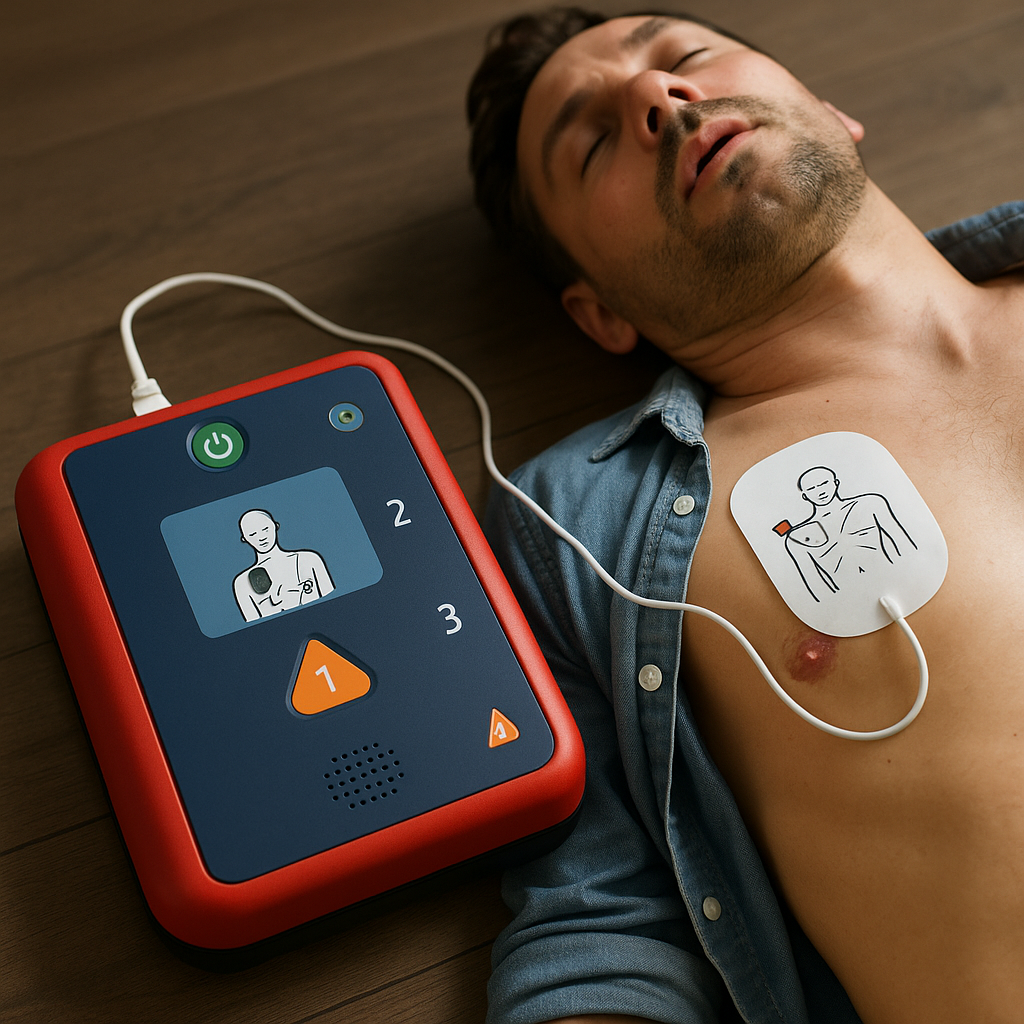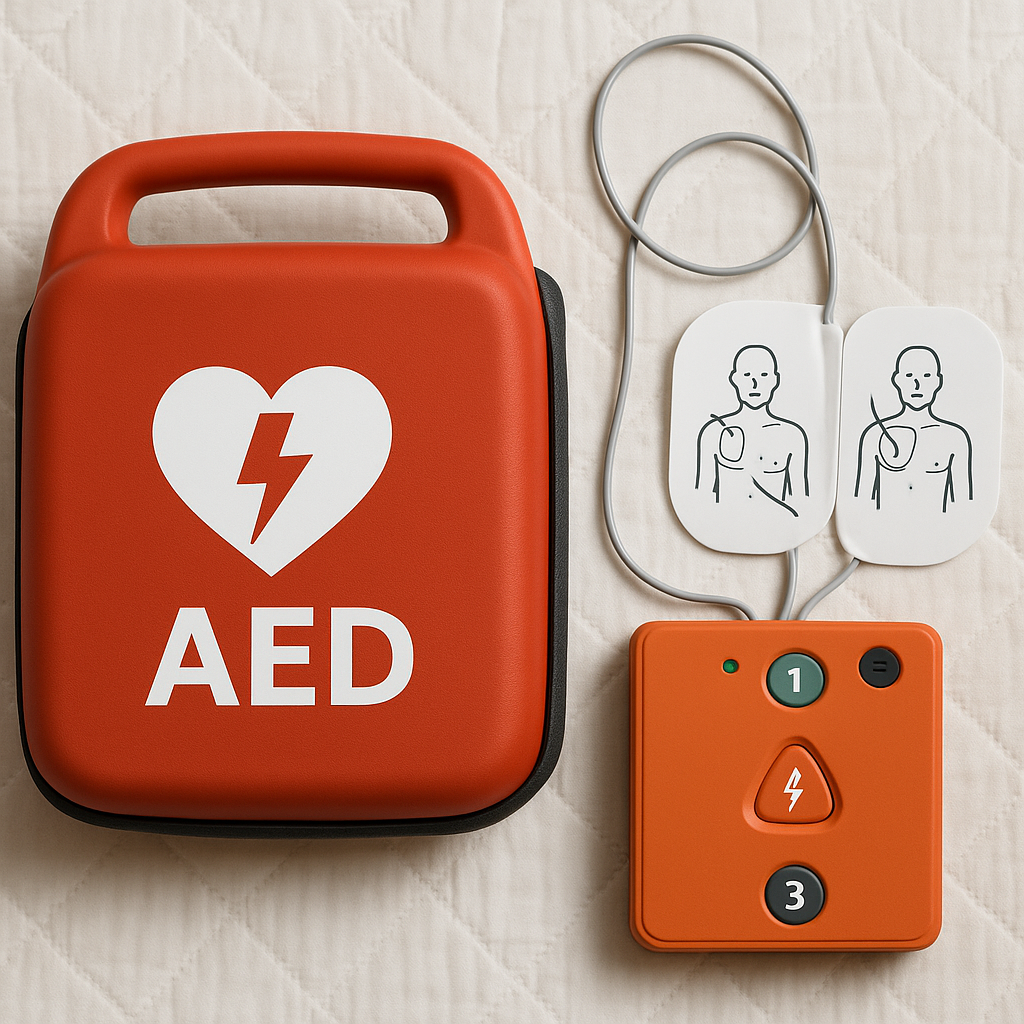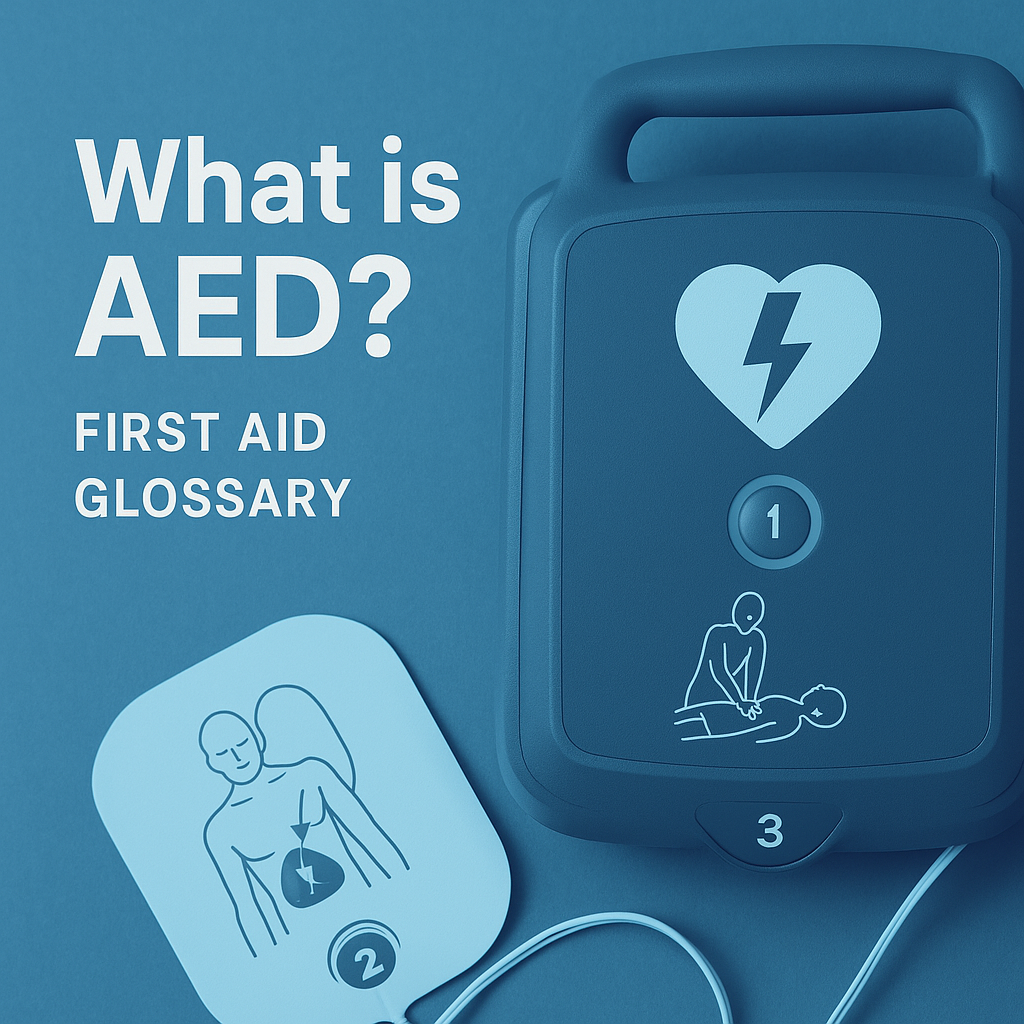- Key Facts About AEDs
- Causes of Cardiac Arrest
- Symptoms of Sudden Cardiac Arrest
- Step-by-Step Guidance: How to Use an AED
- Step 1: Call for Help
- Step 2: Prepare the AED
- Step 3: Attach the Electrode Pads
- Step 4: Follow AED Instructions
- Step 5: Continue CPR
- Trainer Tips / Safety Advice
- Additional Considerations
- Conclusion
What is AED? – First Aid Glossary
An AED, or Automated External Defibrillator, is a portable device designed to deliver an electric shock to the heart in the event of a sudden cardiac arrest. By analyzing the heart’s rhythm and determining whether defibrillation is necessary, AEDs can significantly increase the chances of survival for an individual experiencing a cardiac event.
Key Facts About AEDs
– Purpose: AEDs are used in emergencies to restore a normal heart rhythm in individuals who have stopped breathing or whose heart has ceased functioning.
– Accessibility: In Australia, AEDs are commonly found in public spaces, workplaces, and schools, making them accessible in times of need.
– User-Friendly: These devices are equipped with voice prompts and visual aids to guide users through the defibrillation process, making them easy to operate even for those without medical training.
Causes of Cardiac Arrest

Understanding the causes of sudden cardiac arrest can help highlight the importance of AEDs:
– Heart Conditions: Diseases like coronary artery disease and cardiomyopathy can lead to cardiac arrests.
– Electrolyte Imbalances: High or low levels of potassium and magnesium in the blood can disturb the heart’s rhythm.
– Trauma or Injury: Serious injuries, particularly to the chest, can result in cardiac arrest.
– Drug Overdose: Certain drugs can disrupt heart rhythm, leading to a cardiac event.
Symptoms of Sudden Cardiac Arrest
Recognizing the signs of a sudden cardiac arrest is crucial:
– Loss of Consciousness: The person may become unresponsive abruptly.
– Absence of Pulse: No pulse can be detected.
– Unusual Breathing: Gasping or no breathing at all.
Step-by-Step Guidance: How to Use an AED

In an emergency scenario, knowing how to use an AED can be lifesaving. Here’s a concise step-by-step guide in line with Australian first aid standards:
Step 1: Call for Help
1. Dial Triple Zero (000): As soon as you recognize someone is unresponsive, request immediate medical assistance.
2. Ensure Safety: Check that the area around you is safe for both the rescuer and the victim.
Step 2: Prepare the AED
1. Retrieve the AED: If available, bring the AED to the person who needs it.
2. Power On the AED: Most devices have a straightforward ‘on’ button. Follow the audio prompts.
Step 3: Attach the Electrode Pads
1. Expose the Chest: Remove the victim’s clothing. If they are wet or sweaty, dry the chest area.
2. Place the Pads:
– Right Pad: Place the right pad on the upper right side of the chest.
– Left Pad: Place the left pad on the lower left side of the chest.
Step 4: Follow AED Instructions
1. Stand Clear: Ensure everyone away from the patient. The AED will analyse the heart rhythm.
2. Deliver Shock:
– If advised, press the shock button when prompted.
– If no shock is advised, continue CPR until emergency services arrive.
Step 5: Continue CPR
1. Perform CPR: After using the AED, immediately resume CPR until emergency services take over or the patient shows signs of life.
Trainer Tips / Safety Advice
– Practice Regularly: Familiarize yourself with AED operation through refresher courses or practice sessions.
– Avoid Common Mistakes:
– Improper Pad Placement: Ensure pads are correctly positioned to maximize effectiveness.
– Touching the Patient: No one should be touching the victim during shock delivery.
– Keep AED Maintained: Ensure that the AED’s battery and pads are regularly checked and replaced as necessary.
Additional Considerations
– Age and Size: Special pediatric pads are available for children. Make sure to use them as needed.
– Medical History: If known, inform emergency medical responders of any pre-existing heart conditions.
Conclusion
An AED is a crucial life-saving device in cases of sudden cardiac arrest. Its availability and ease of use can mean the difference between life and death. By understanding how to properly use an AED, along with the symptoms of cardiac arrest, you can equip yourself to act swiftly and decisively in an emergency.
In summary, always remember:
– Call for Help: Dial Triple Zero (000).
– Use an AED promptly: Follow the device’s instructions carefully.
– Continue CPR as needed: Until trained responders arrive.
Equipping yourself with knowledge and skills related to AED usage not only enhances your competence but could also save lives. Make it a priority to seek first aid training and refresh your skills regularly.

Leave a Reply